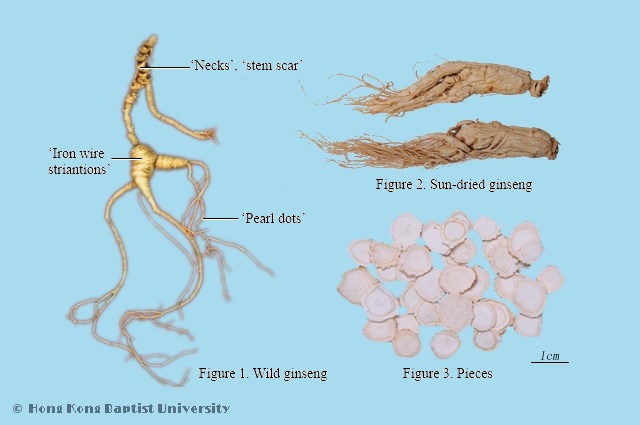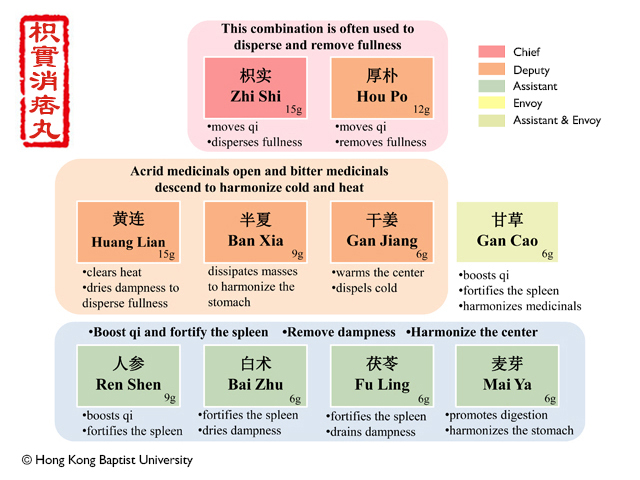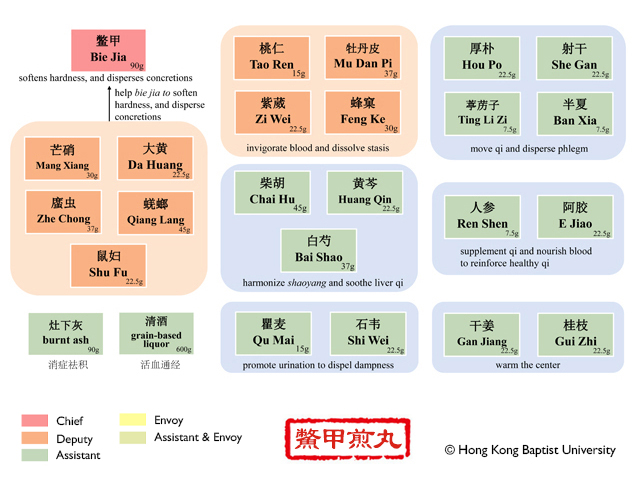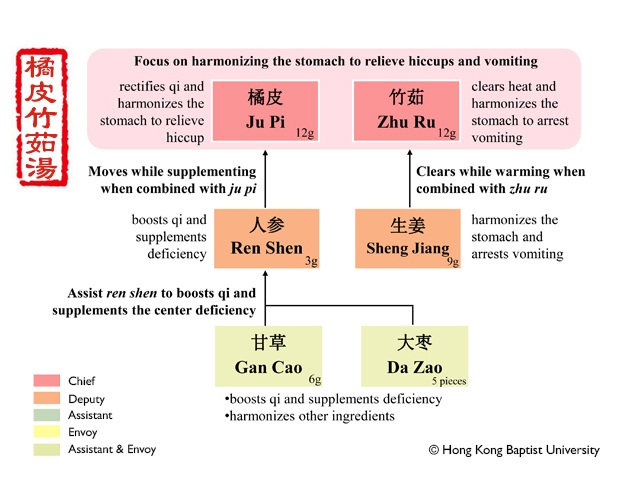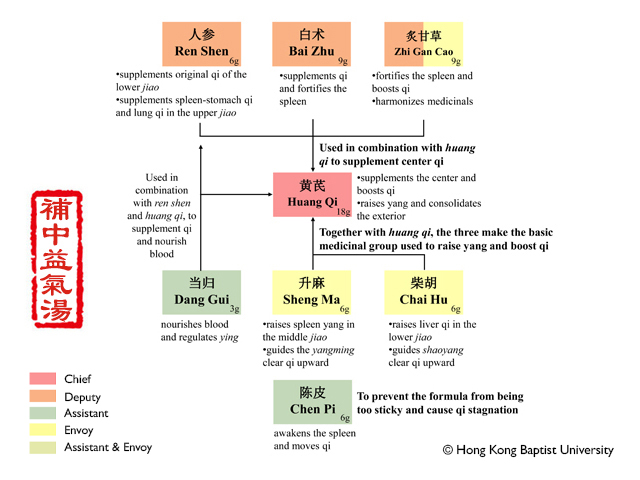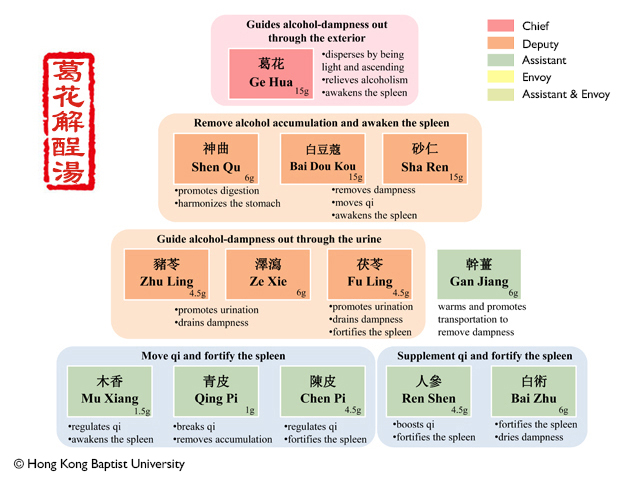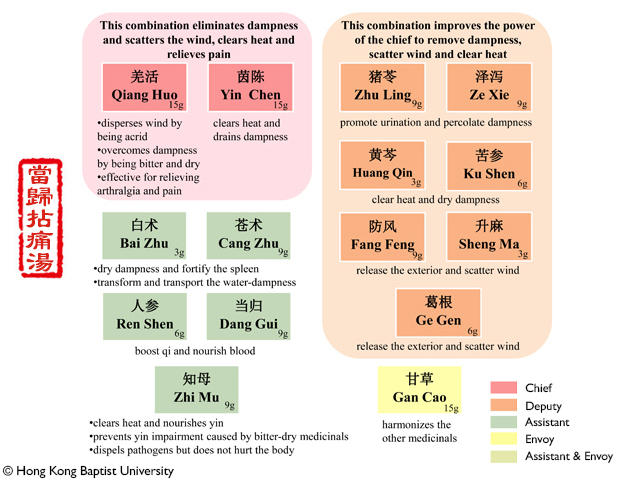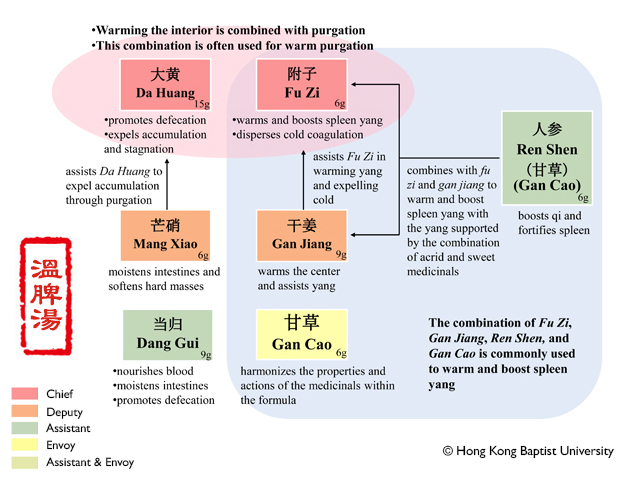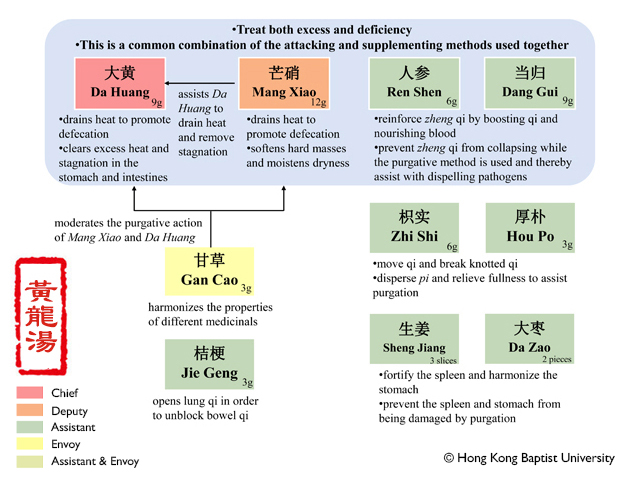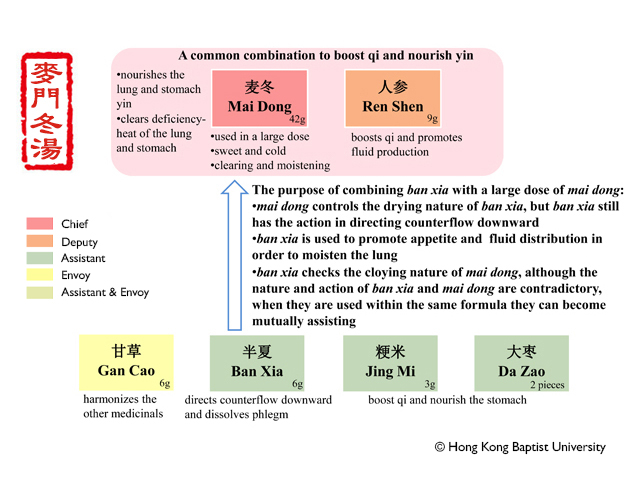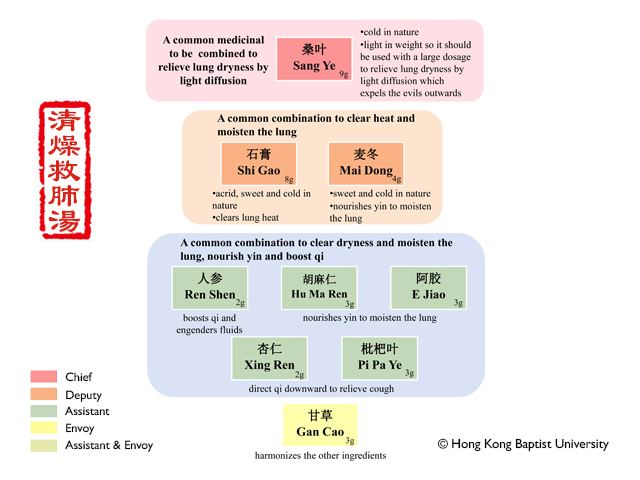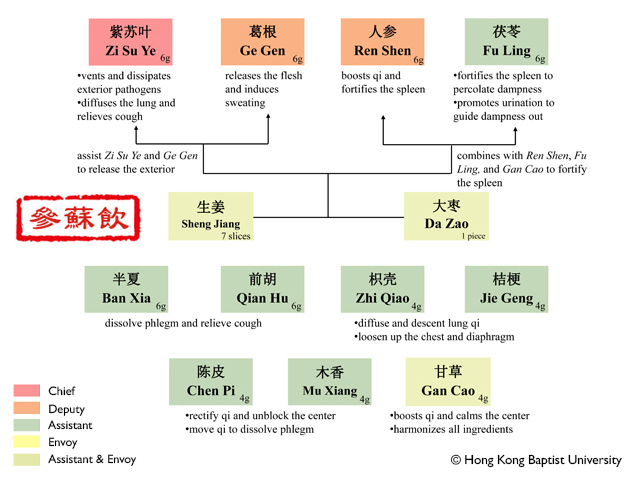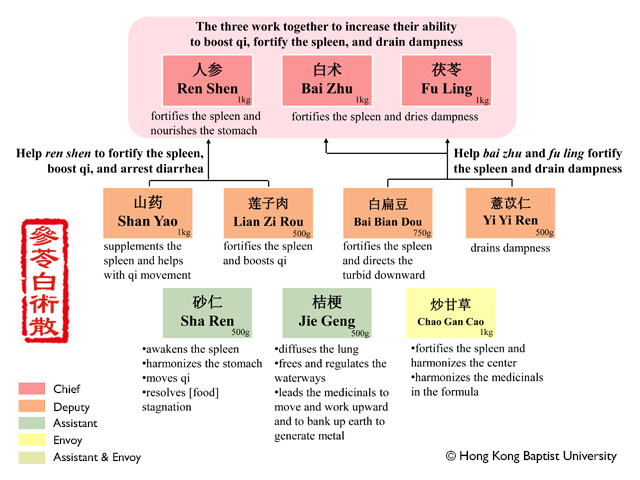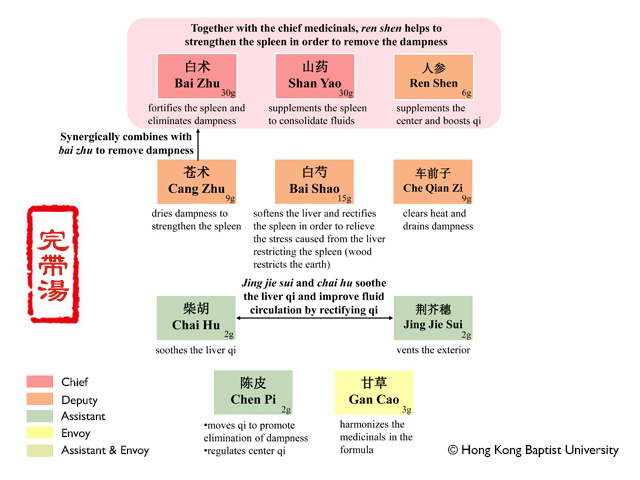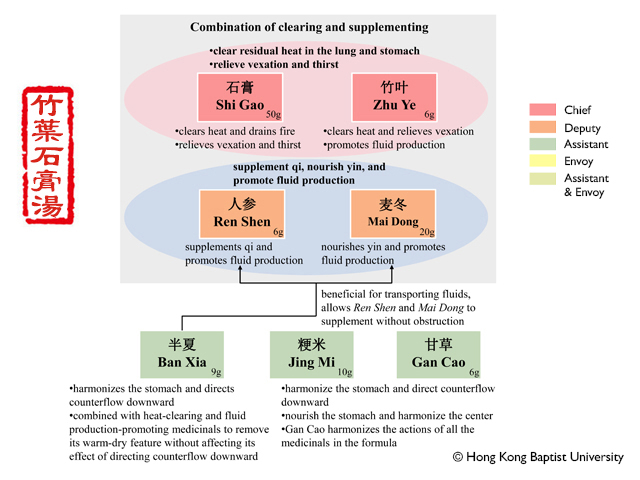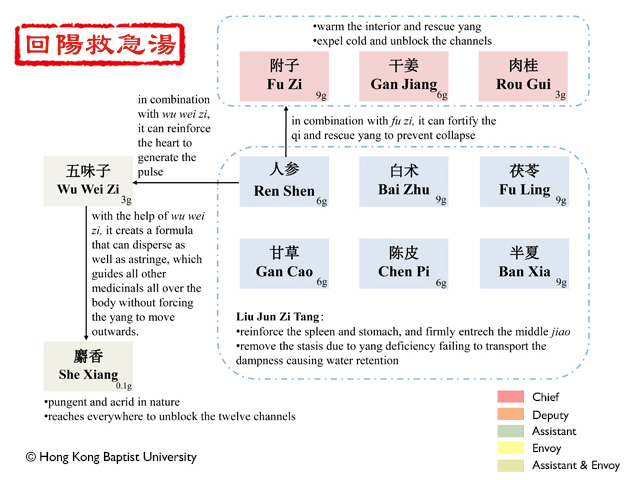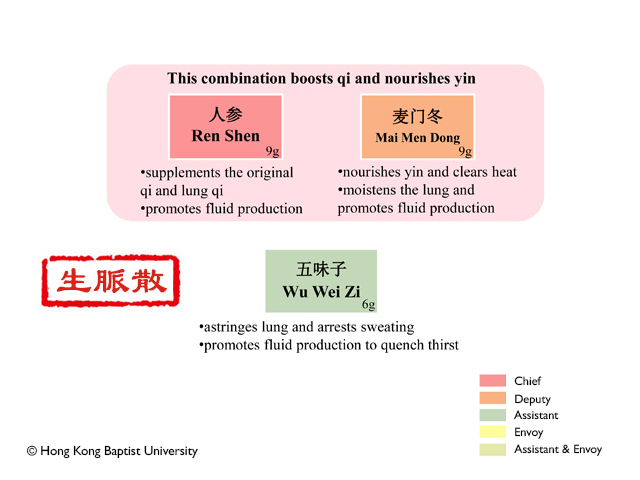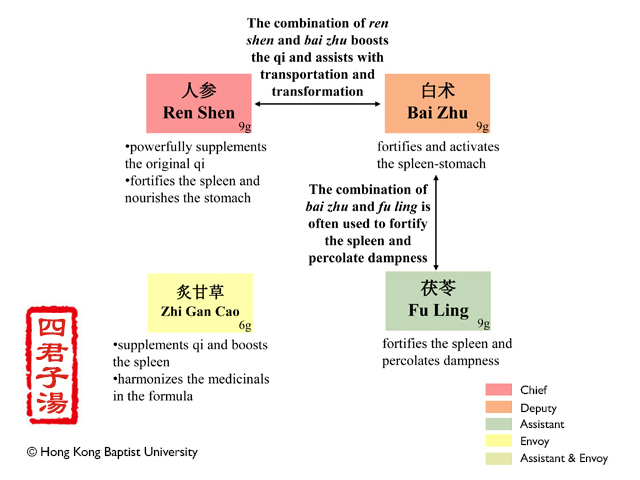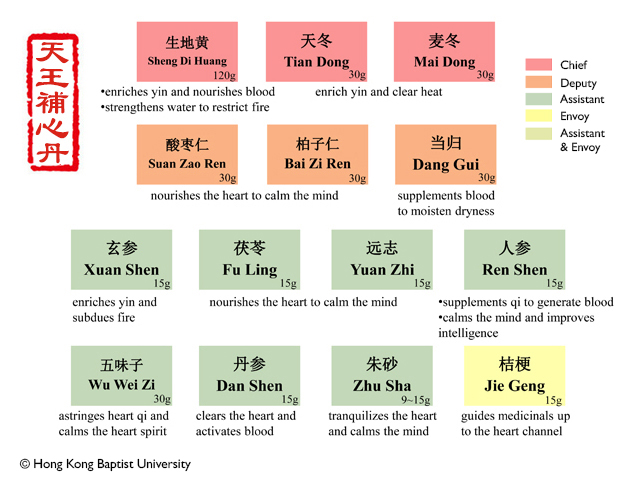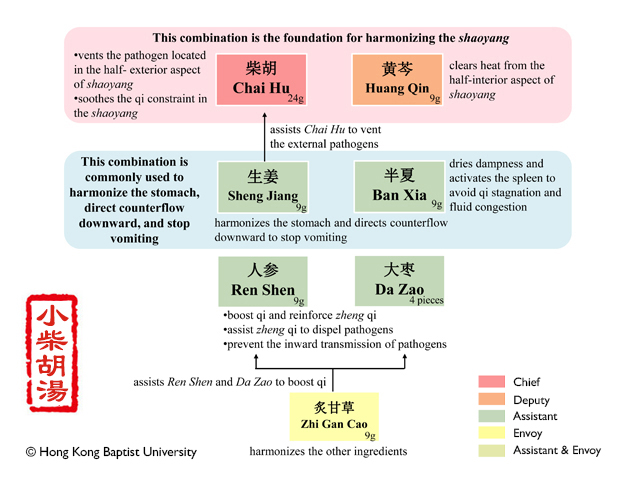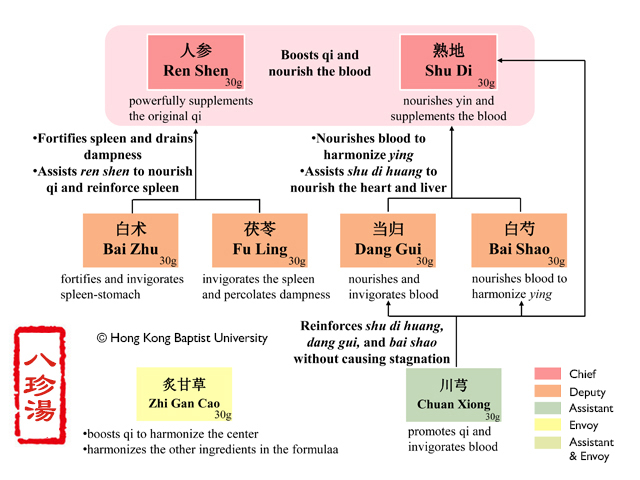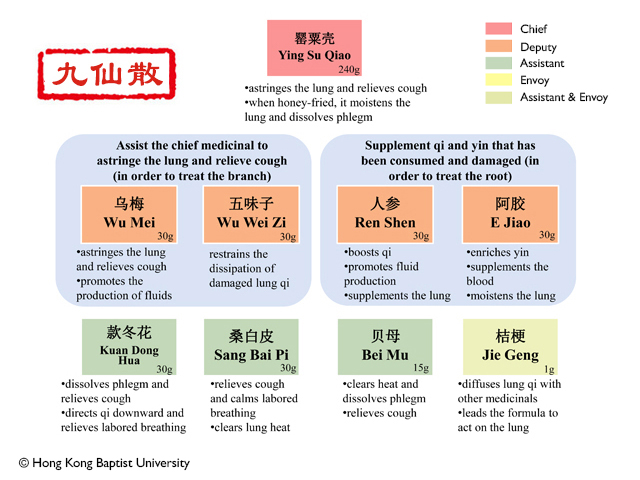Production RegionsPrimarily produced in the Chinese provinces of Jilin, Liaoning, Heilongjiang.
Macroscopic FeaturesSun-dried ginseng: Root is fusiform or cylindrical, 3~15cm long, 1~2cm diameter. Externally grayish-yellow, upper portion or whole body has loose and shallow intermittent thick horizontal lines and obvious longitudinal wrinkles, lower portion has 2~3 lateral roots, with numerous thin and long rootlets which have unobvious tiny verruca. Rhizome is 1~4cm long, 0.3~ 1.5 cm diameter, often twisted and curved, with adventitious roots and loose indented stem scars. Relatively hard texture, fractured surface is pale yellowish-white, powdery, cambium rings are brownish-yellow, cortex has yellowish-brown spotted resin canal and radial cracks. Distinctive odor, slightly bitter, sweet taste. Wild ginseng: main root and rhizome is equally long or relatively short, “人”shaped, rhombus or cylindrical, 2~10cm long. Externally grayish-yellow, with longitudinal wrinkles, upper portion has dense deep ringed horizontal lines, often has 2 lateral roots, rootlets is thin and long, clear and not messed, with obvious verruca. Rhizome is thin and long, upper portion has dense stem scars, adventitious root is relatively thick, similar to jujube seed. Wild ginseng pieces: spherical or sub-spherical thin pieces, externally grayish-white, with “chrysanthemum lines,” powdery, light in weight, brittle texture. Distinctively aromatic odor.
Quality RequirementsSuperior medicinal material has thick strip, hard texture, thin skin, without broken.
PropertiesNeutral; sweet and slightly bitter taste, slightly warm.
FunctionsGreatly supplements original qi, restores the pulse, secures desertion, supplements the spleen, benefits the lung, engenders body fluids, stops thirst, quiets the spirit, promotes intelligence. Apply to complete exhaustion due to physical weakness, cold limbs and weak pulse, poor appetite due to splenic deficiency, coughing with asthma due to pulmondeficiency, hydrodipsia due to depletion of body fluids, feverish dysphoria and diabetes, deficiency and weakness due to invalidism, palpitation and insomnia, impotence and uterus cold, cardiac failure, cardiogenic shock.
Processed FormWhite ginseng (sweet ginseng): Often use the Korean red ginseng with short body, relatively inferior texture, boiled in water, soak in sugar water, then sun-dry. The nature has most neutral nature, relatively less effects; apply to supplement the spleen and lung. Red ginseng: steam ginseng with high temperature for 2h until it completely cooked, remove the rootlets after dried, press into irregular square cylindrical shape. it has effect of warm-supplement. Still has nature of vigorous warm and dry while supplementing qi; advanced in excite yang qi, apply to emergency treatment and rescue yang. Organic ginseng: no pesticide residue, no chemical fertilizer, no transgenosis cultivated. Maximally retained the composition and effect of ginseng.
Technical Terms'Neck': This refers to the remnants of rhizome seen on the apex of root medicinal materials, it is a feature used in the differentiation of medicinal materials. 'Stem scar': this refers to the numerous rounds or semi-circular concave scars of withered stems that can be seen on the 'neck'; that are shaped like small bowls. 'Iron wire striations': this refers to dark-colored, round striations that are present on the outer surface of the upper portion of the taproot of wild ginseng, it is a diagnostic feature used in the identification of wild ginseng. 'Pearl dots': this refers to small protuberances on the fine rootlets of wild ginseng; these areas also called 'pearl bumps'.
OriginThe dried root and rhizome of Panax ginseng C. A. Mey.(Araliaceae) (cultivated).
